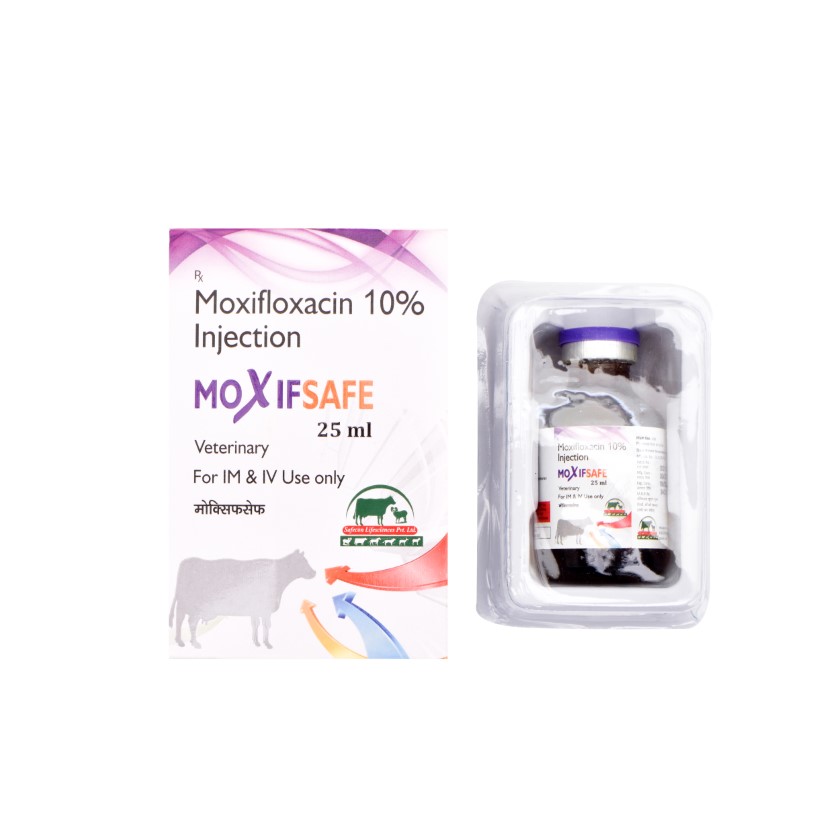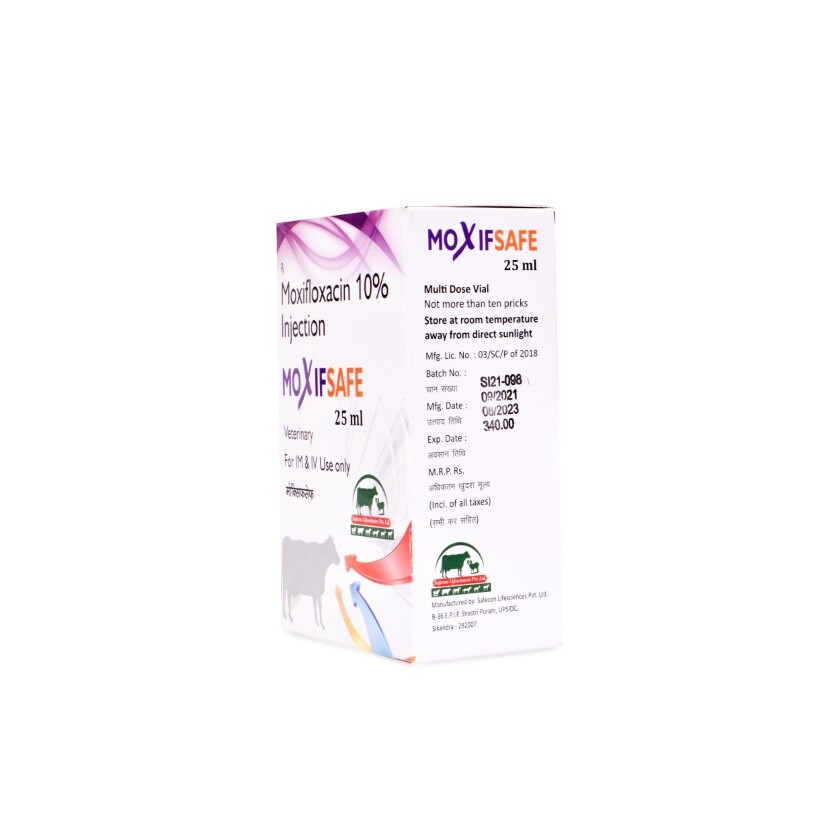Description
Composition
Each ml contains 100mg Moxifloxacin Hydrochloride
Description
Moxifloxacin is a synthetic fluoroquinolone antibiotic agent. It is an antibiotic used to treat a number of bacterial infections. This includes pneumonia, conjunctivitis, endocarditis, tuberculosis, and sinusitis. It is used by mouth, by injection into a vein, or as an eye drop.
Chemical structure
Indications
Active against ocular pathogens like staphylococcus species and pseudomonas aerugenosis
Bacterial infection of eye
Bacterial conjunctivitis
Corneal ulceration
Skin infection
Pneumonia
Pharmacodynamics
Moxifloxacin is a quinolone/fluoroquinolone antibiotic. Moxifloxacin can be used to treat infections caused by the following bacteria: Aerobic Gram-positive microorganisms: Corynebacterium species, Micrococcus luteus, Staphylococcus aureus, Staphylococcus epidermidis, Staphylococcus haemolyticus, Staphylococcus hominis, Staphylococcus warneri, Streptococcus pneumoniae, and Streptococcus viridans group. Aerobic Gram-negative microorganisms: Haemophilus influenzae, and Haemophilus parainfluenzae. Other microorganisms: Chlamydia trachomatis.
Moxifloxacin is bactericidal and its mode of action depends on blocking of bacterial DNA replication by binding itself to an enzyme called DNA gyrase, which allows the untwisting required to replicate one DNA double helix into two. Notably the drug has 100 times higher affinity for bacterial DNA gyrase than for mammalian. Moxifloxacin is a broad-spectrum antibiotic that is active against both Gram-positive and Gram-negative bacteria
Mechanism of action
The bactericidal action of moxifloxacin results from inhibition of the enzymes topoisomerase II (DNA gyrase) and topoisomerase IV. DNA gyrase is an essential enzyme that is involved in the replication, transcription and repair of bacterial DNA. Topoisomerase IV is an enzyme known to play a key role in the partitioning of the chromosomal DNA during bacterial cell division.
Toxicity
Symptoms of overdose include CNS and gastrointestinal effects such as decreased activity, somnolence, tremor, convulsions, vomiting, and diarrhea. The minimal lethal intravenous dose in mice and rats is 100 mg/kg.
Contraindications
Contraindicated in animals below 6 month of age
Presentation
25 ml




















There are no reviews yet.